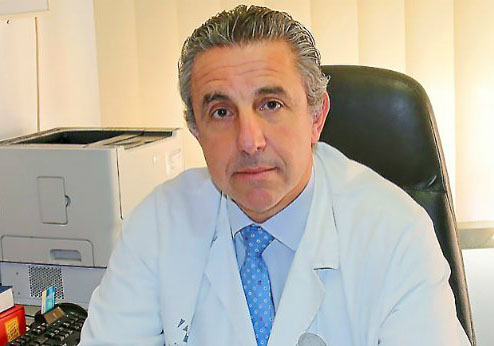A new device to reduce the risk of infection in percutaneous operations such as femur and humerus exo-prosthesis has been design
- Press Office
- January 15th, 2018

Researchers form the Universitat de València, the Universitat Politècnica de València and the Hospital Clínico Universitario-INCLIVA have developed a new device - percutaneous collar - that can reduce the risk of infection in femur and humerus implants and during the elaboration of ostomies.
This device was initially designed to be implemented in femur and humerus exo-prosthesis. However, as it hermetically seals the communication, it can be used in any type of derivation stoma such as colostomies and cystotomies, among others” indicates Antonio Silvestre, a researcher from the Universitat de València and INCLIVA.
The collar has been registered as a patent by the Universitat de València and the Universitat Politècnica de València. It is formed by an interior flexible net that improves the adhesion of the healing tissue and permits to adapt the rigidity of the collar to the surrounding tissues. This net is set over a rigid nut ring system and it is recovered with flexible microporous materials such as silicone, which connects soft tissues with the interior net through micro-tubes. This way it eases the internal proliferation of cells.
“This ring, which is attached to the net, creates a solid and steady seal in the epidermis while the adaptable flexibility of the net permits to overcome the generated tensions in the connection area and distributes them homogeneously. This way we expect to reduce tearing in the connection area and improve the barrier against infections” explain both José Expósito, who is undertaking a PhD in Health and Welfare Technologies, and Doctor Antonio Silvestre, a researcher from the Universitat de València and INCLIVA.
Regarding its advantages, researchers indicate that currently the main risk is the materialization of superficial or deep infections. This is because a stoma or opened surgical injury that connects the interior and exterior of the body is performed. As this collar is microporous, it improves the healing tissue barrier that grows in its interior. “The key to reduce infections is the internal proliferation of both epithelial and adipose internal cells along the collar by generating a great amount of fibrous healing tissue that can reduce the entrance of pathogenic agents as it has a healing effect” indicates Ana Vallés, a researcher from the Centre of Biomaterial and Tissue Engineering.
The necessity to achieve a perfect isolation in the endomedular system, which has been also registered as patent by the same researchers, led pre-doctorate researcher José Expósito and Professor Antonio Silvestre to contact collaborators from the Centre of Biomaterial and Tissue Engineering to accomplish a perfect sealing of the opened surgical injury (stomas).
This device is also outlined thanks to its versatility to adapt to different types of stems, catheters and ostomy bags or gastric/urologic buttons, as researchers José Albelda and Juan Víctor Hoyos have proved.
















